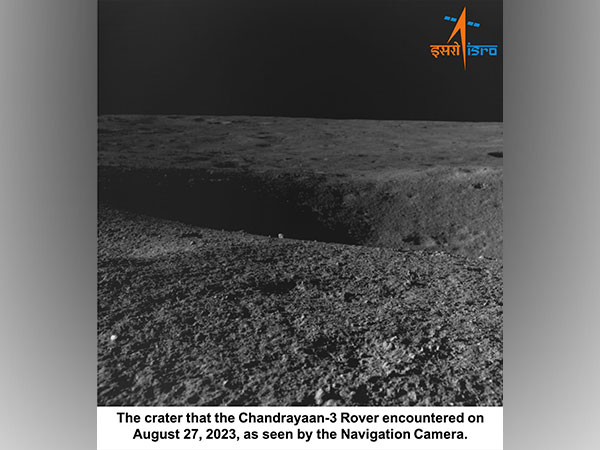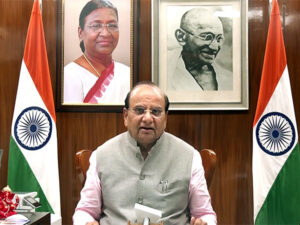“Pragyan Rover comes across 4-meter diameter crater on lunar surface”: ISRO
Bengaluru (Karnataka) [India], August 28 (ANI): Indian Space Research Organisation (ISRO) on Monday informed that Pragyan Rover came across a 4-meter diameter crater on the lunar surface yesterday.

Taking to X (former Twitter), ISRO said,”Chandrayaan-3 Mission: On August 27, 2023, the Rover came across a 4-meter diameter crater positioned 3 meters ahead of its location. The Rover was commanded to retrace the path.”
ISRO said that the rover is now safely heading on a new path.
Earlier Nilesh M Desai, Director, Space Applications Centre (SAC) on Sunday said that the Chandrayaan-3’s rover module Pragyan, moving on the surface of the moon, is in a “race against time” and that the ISRO scientists are working to cover a maximum distance of the uncharted South pole through the six-wheeled rover.
He said that the moon mission’s three main objectives were: soft landing on the lunar surface, movement of the Pragyan rover and obtaining science data via payloads, attached to the six-wheeled rover and lander Vikram.
“Our two main objectives have been accomplished successfully, but our third objective is underway,” the scientist said.
Observing that the Pragyan rover is in a race against time, he said,”Our focus is to make the rover cover as much distance of the moon’s South pole as possible so that it conducts more experiments and we obtain data here on earth.”
“We have only 14 days in total for this mission, which is equal to one day on the moon, so four days have been completed. The more experiments and research we can do in the remaining ten days will be important. We are in a race against time because in these 10 days, we have to do maximum work and all the ISRO scientists are working on it,” Desai said.
India took a giant leap on August 23, as the Chandrayaan-3 lander module successfully landed on the moon’s South pole, making it the first country to have achieved the historic feat.
The country became the fourth– after the US, China, and Russia – to have successfully landed on the moon’s surface.






